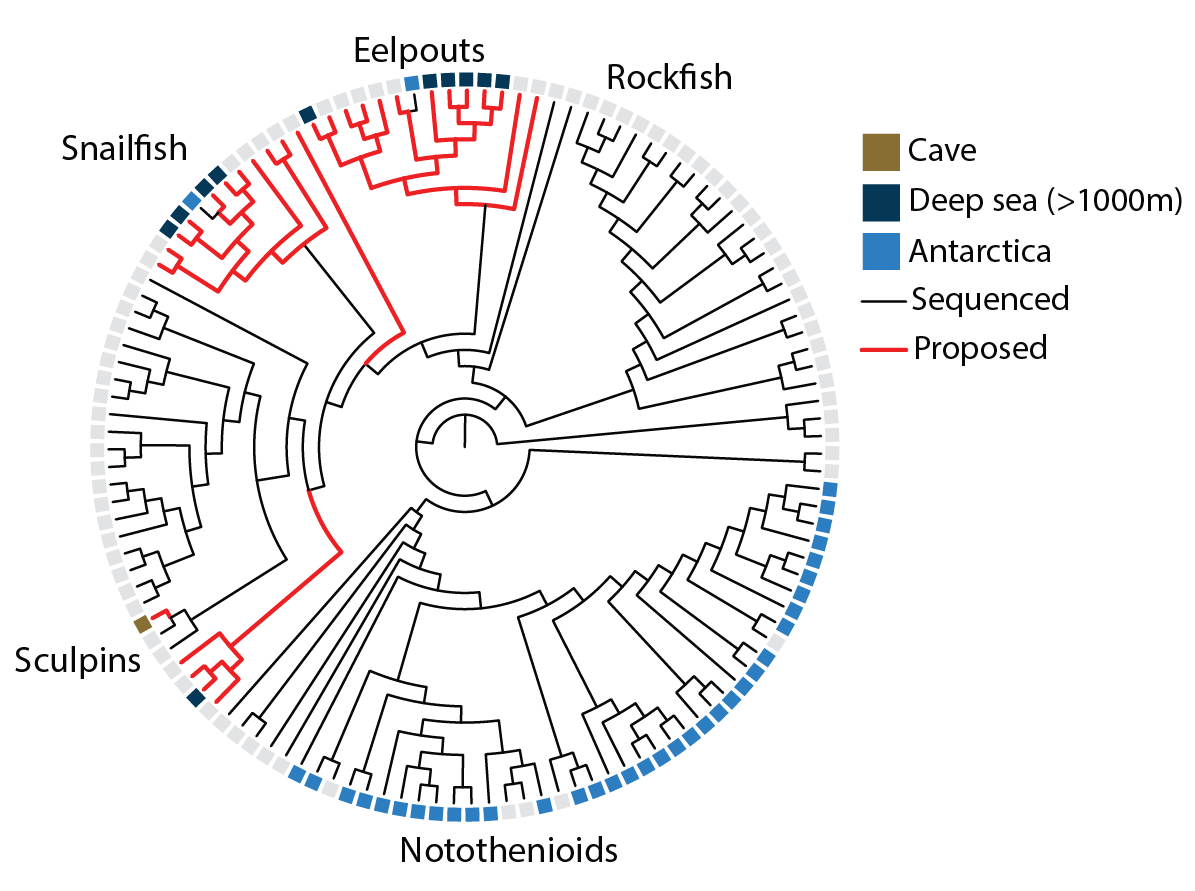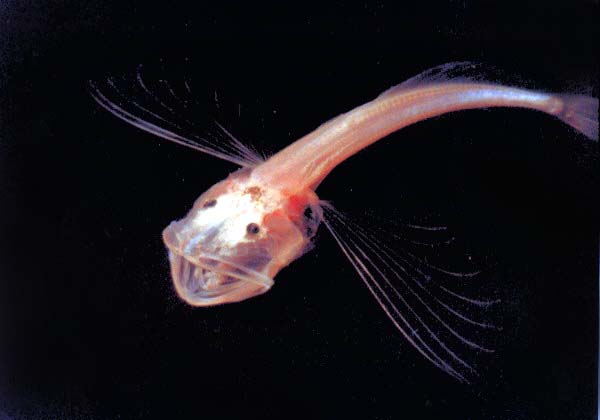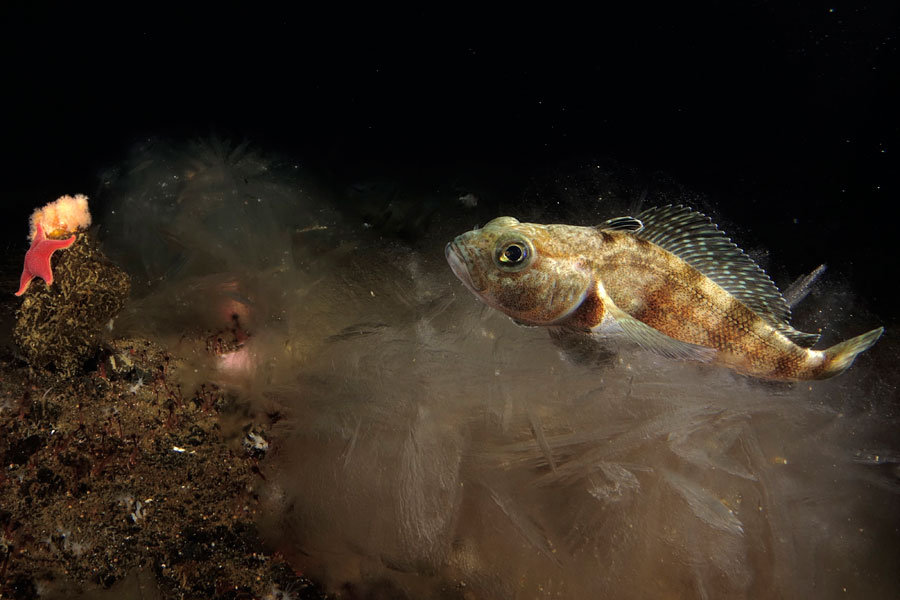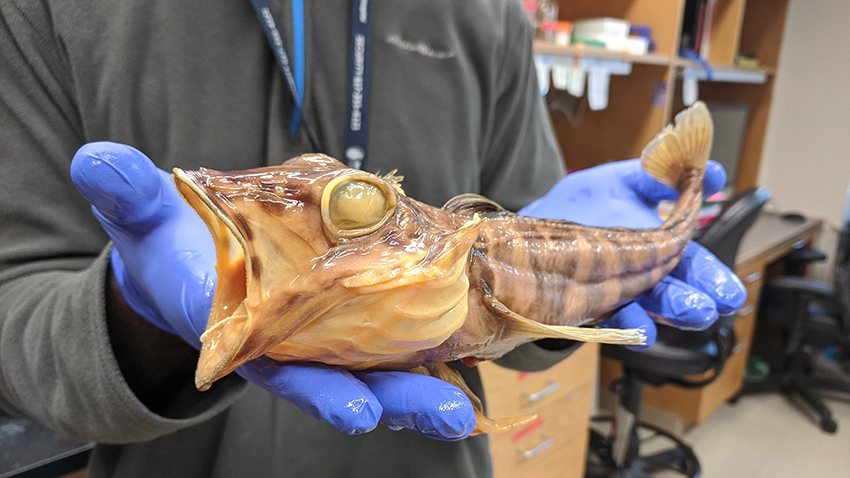Evolution in the extremes
Our phylogenetic analyses tools and approaches permit broad sampling of species within clades to assess genetic changes associated with evolutionary change. Evolution provides the template in which we can address questions of change. Radiation of fishes into extreme environments are important case studies in which to understand the genetic and developmental framework for adaptation. Interestingly, many of the traits evolved in these lineages are similar to disease conditions in humans; in one case the trait is beneficial, the other pathological. We can use these models to address how organisms can compensate for these conditions and if similar mechanisms are present in us.

We have initiated three separate case studies in which to look at unique and parallel mechanisms of adaptation: 1) Antarctic notothenioids, 2) Lake Baikal Sculpins, and 3) Artic Charr of Lake Kronotskoe.
Icefish
The radiation of Antarctic notothenioid fishes following the cooling of the Southern Ocean provides an opportunity to investigate mechanisms of adaptation to environmental change. We have generated a phylogenetic dataset of variation across >250,000 protein-coding exons and conserved non-coding elements in 44 notothenioid species and 4 outgroups (Daane et al. 2019). We have defined genetic signatures of selection underlying reduced bone density (Daane et al 2019) and anemia (Daane 2020) and found parallels with mutations in human disease. Current work is looking at use of these datasets to refine regulatory changes driving reduced skeletal density in tandem with increase liposity in these fishes.

Lake Baikal Sculpins
In tandem with notothenioids, we have initiated work on parallel radiations that have occurred in similar conditions, however in independent lineages. Lake Baikal in Russia presents with many similar environmental stresses as life in the Southern Ocean, including low temperature and life at great depths. We have generated comparable phylogenetic dataset of genetic variation of Sculpin species that have radiated in this fresh water lake, evolving similar morphological attributes as seen in some Antarctic notothenioids. In tandem with effort to generate chromosome level genome of these fishes, we are looking at parallel and unique genetic shifts underlying their adaptation to extreme environments.
Lake Kronotskoe Charr
Salmonid fishes such as Artic Charr have undergone repeated diversifications in isolated lakes of the northern hemisphere. In such a repeated evolutionary experiment, such parallel radiations empowers comparative genomic analyses to refine the genetic signatures of the morphological and physiological changes that occur. One radiation of Arctic charr occurred in Lake Kronotskoe, Russia, leading to seven distinct, true breeding morphs. We have performed genome wide analysis of variation in these lineages and have identified specific changes in developmental regulation that highlight common principles of salmonid developmental and evolutionary plasticity.
Looking to history to understand the genetic foundations for adaptation to climate change
Though modern climate change may be unprecedented in its pace, all extant species are ultimately descended from survivors that have weathered environmental instability. The historical records of these ancient climate struggles are part of the genetic legacy of modern life. To examine these records, we have developed a comparative genomics platform based on targeted capture, allowing population sequencing of >250,000 coding and conserved non-coding elements (CNEs) that encompass entire radiations of species and millions of years of evolutionary history. These data allow us to track genome evolution in a paleophylogenetic context to understand the processes that precede, initiate, and follow climate-adaptive trait evolution. Recently, we applied this methodology to Antarctic notothenioid fishes, one of few lineages known to have undergone an adaptive radiation specifically following a global climate event the Oligocene-Eocene glaciation. Intriguingly, in contrast to the model that environmental crisis leads to adaptive changes, we found these fishes harbored elevated genetic variation and evolved key traits well prior to environmental calamity; they were primed for niche expansion while other fish species went locally extinct.
Funding
This phylogenetic work is supported by grants from NSF, Guggenheim, and Climate Change Initiative at Harvard Medical School.

